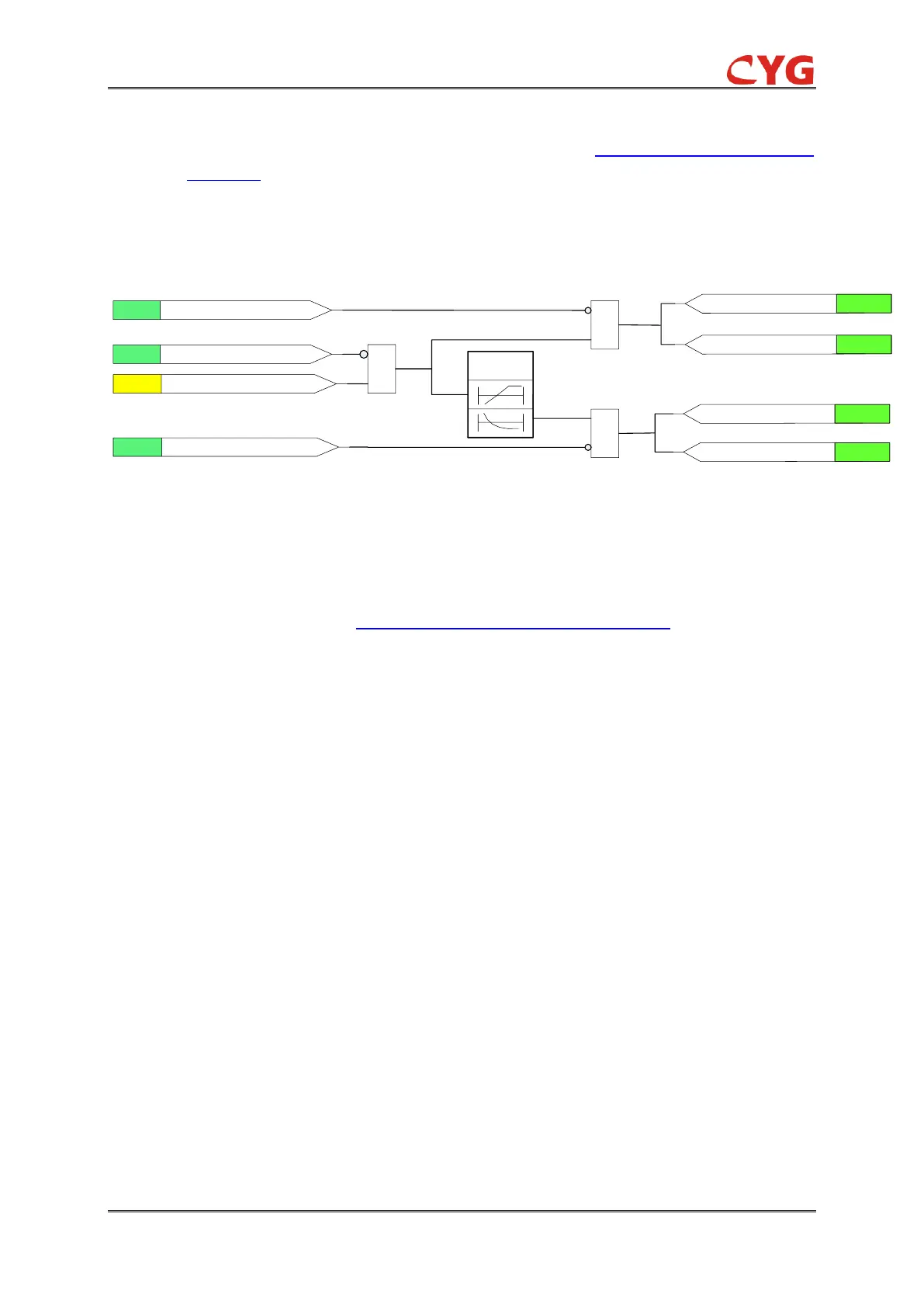Figure 3.25-4 Functional module diagram
Once initiation logic is fulfilled and no blocking signal is activated, the 51NT_Str signal is set. The
51NT_Str_A, 51NT_Str_B and 51NT_Str_C outputs are used to indicate which phases are started.
The timer model is determined by IDMT curves for over quantity protection
The operation is activated after the operation timer has reached the calculated value. However,
51NT_Min_Op_T defines the minimum desired operate time for IDMT. If a drop-off situation
happens, that is, a fault suddenly disappears before the operate delay is exceeded, the operation
will reset after the set value 51NT_Reset_T is exceeded.
NOTICE!
The 51NT_Min_Op_T setting should be used with great care because the operation
time is according to the IDMT curve, but always at least the value of the
51NT_Min_Op_T setting.
The binary input 51NT_Blk can be used to block the function. The activation of the 51NT_Blk input
deactivates all outputs and resets internal timers. The binary input 51NT_Blk_Str can be used to
block the start signals. The binary input 51NT_Blk_Op can be used to block the operation signals.
3.25.3 51NT Application Scope
Shunt capacitor banks are widely used in transmission and distribution networks to produce
reactive power support. 51NT is designed for the protection against internal faults in
H-bridge-connected capacitor banks. This 51NT detects an asymmetry in the capacitor bank,
caused by blown fuses or short-circuits across bushings, or between capacitor units and the racks
in which they are mounted.
Normally, the capacitor units are designed to withstand 110% of the nominal voltage continuously.
When an element inside a capacitor bank fails, the remaining healthy elements experience an
increase in voltage across them. If the voltage exceeds 110% of the nominal voltage, it can lead to

